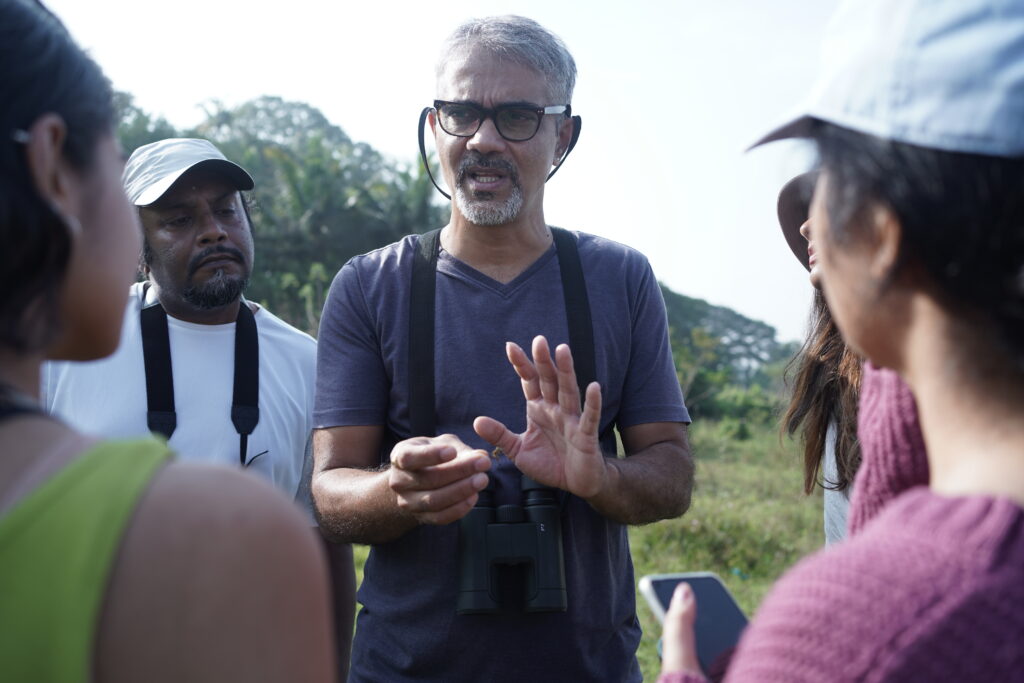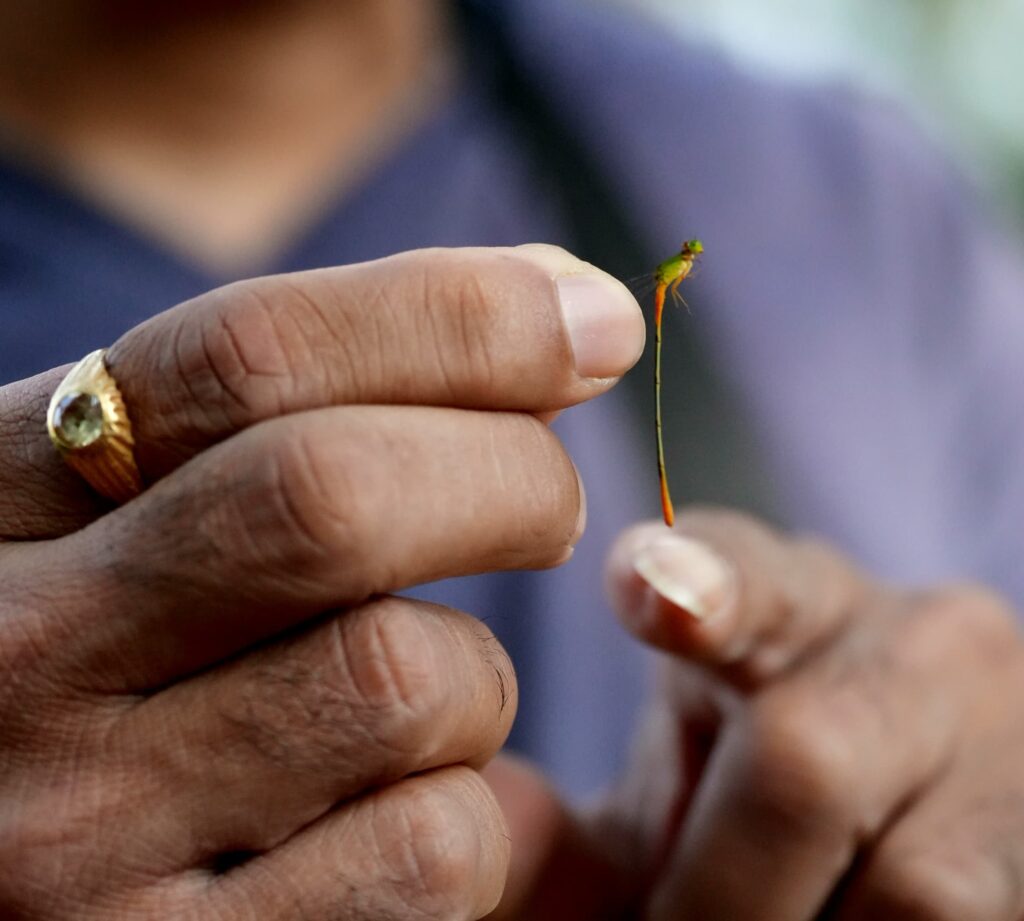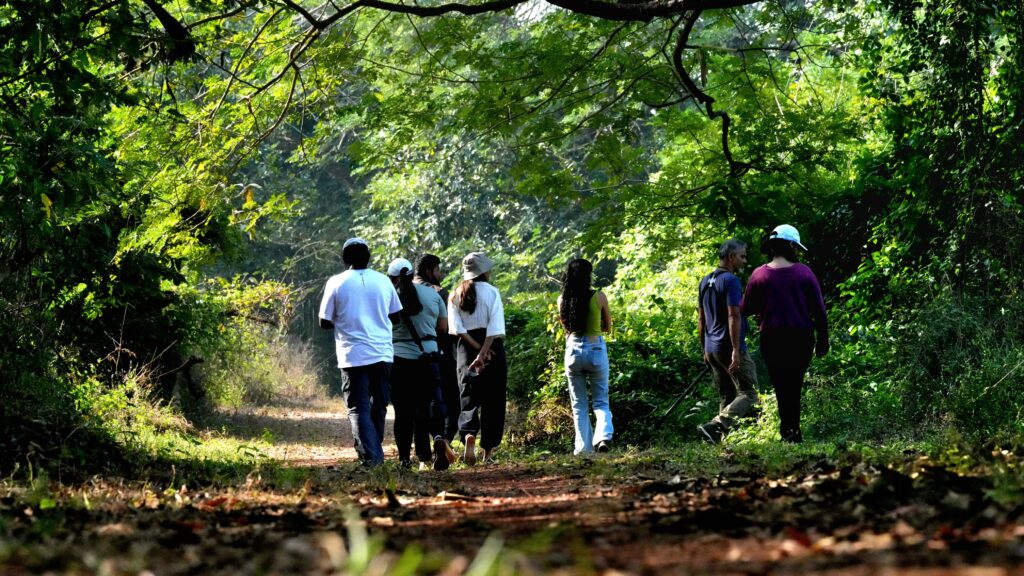




Panaji, January 2024- Dragonflies and damselflies are accurate bio-indicators as the presence or absence of such species is a reflection of the health of that particular ecosystem, especially wetlands, which are abundant in Goa, according to naturalist Parag Rangnekar.
Speaking at a recent walk at Carambolim titled ‘Wetland Wings: Dragonfly & Damselfly Walk’,
Rangnekar stated that smaller fauna are best suited as indicators of ecosystems’ health as they are unable to adapt to sudden changes in the environment and either migrate or perish.
Rangnekar’s walk, held along the Carambolim Lake in North Goa, was conducted as part of the Greener Side Campaign, an initiative by Echoes of Earth, India’s greenest festival, that aims to shine the spotlight on the Western Ghats and raise awareness about the importance of conserving Goa’s rich biodiversity.
“As far as human civilization is concerned, the wetlands have a very important role to play in people’s livelihoods. This type of land provides us with ecosystem services like climate regulation due to the watery terrain and is also utilised for agricultural purposes,” Rangnekar said.
Rangnekar, an ecologist, emphasised the connection that dragonflies and damselflies, collectively known as Odonates, have with the wetlands.
“Half the Odonates’ life is spent underwater during the egg and larval stage. If the water body gets polluted or the water column subsides or evaporates, the diversity of the Odonates’ population is immediately affected. Hence, just the presence or absence of a species indicates the health of the wetlands,” stated Rangnekar.
The walk aimed to generate interest in participants to explore the fascinating and still not widely traversed world of the Odonates.
“It is a shame that these creatures are all around us and we never really pay attention to them for various reasons – either lack of exposure, interest or time. I am glad that I made time for this and learned about the Odonates’ significance to ecosystems at large,” said wildlife rescuer Benhail Antao, who participated in the walk.
According to Rangnekar, there are 108 species of Odonates in Goa, but there has been no in-depth research conducted as people do not find them as interesting as birds or butterflies when Odonates play an equally important role in maintaining Goa’s biodiversity.
“The Odonates, particularly dragonflies, are apex predators and species like the Granite Ghost feed exclusively on mosquitoes, keeping their population under control and preventing the spread of deadly diseases like dengue, malaria and other vector-borne ailments. Aquatic dragonfly nymphs also feed on mosquito larvae and effectively restrict mosquito breeding,” stated Rangnekar.
He then stated that there is a need to trigger the innate selfishness of humans to aid in the conservation of the wetlands.
“If we want the wetlands for ourselves, we will go out of our way to ensure its health. Indirectly, this selfishness will benefit the Odonates and will in turn control mosquito populations. We need to establish this mutually beneficial relationship between humans and Odonates,” he said.
Dr Samidha Kurdikar, MD General Medicine, Registrar, General Medicine, Healthway Hospitals, Vasco, also attributes the recent uptick in dengue and malaria cases to climate change and insufficient vector control measures, the latter of which dragonflies comprise a significant part.
“Stagnant pockets of water present in neglected and untidy gardens, parks and construction sites are notorious breeding grounds for mosquitoes, especially posing a greater threat when near human habitation, which renders individual efforts to prevent these diseases important,” said Kurdikar.


